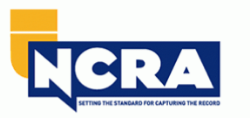Trial Presentation Customized Solutions for Captivating Legal Presentations
Astound the Court: Vital Aspects of a Powerful Trial Presentation
Crucial components such as understanding the target market, crafting a compelling narrative, and understanding spoken and non-verbal interaction are important elements of an effective presentation. As these aspects intertwine, they form a cohesive strategy that not only informs yet additionally engages jurors on multiple levels.

Recognizing Your Audience
Recognizing your audience is a critical aspect of efficient trial presentation. A successful presentation rests on the ability to grasp the demographics, worths, and proneness of jurors. This comprehension educates exactly how debates are framed, evidence is provided, and psychological allures are crafted, ensuring that the message reverberates with the jurors on an individual degree.
Research indicates that jurors come from diverse histories and may have differing degrees of comprehending relating to legal process. Additionally, recognizing the jurors' possible biases and life experiences enables the trial speaker to anticipate arguments and address concerns proactively.
Effective test discussion likewise entails observing jurors' reactions throughout the process. Engaging with jurors as people instead than a collective system is essential in fostering a solid connection in the court room.

Crafting a Compelling Story
Crafting an engaging story is vital in guiding jurors via the complexities of a situation. A well-structured story not only streamlines detailed lawful principles yet also engages jurors on an emotional degree, making the info extra relatable and unforgettable.
This message should resonate with the jurors' values and experiences, fostering a link that transcends mere facts. This sequential approach can aid jurors comply with the progression of events, stressing reason and impact.
Incorporating human aspects-- such as personal stories or stories-- can additionally enhance the narrative's effect. These elements evoke empathy, allowing jurors to imagine the effects of the situation on actual lives. Additionally, employing a constant motif throughout the discussion strengthens the major argument, making it easier for jurors to preserve crucial points.
Ultimately, an engaging story changes a test presentation from a simple recitation of realities into a convincing story that astounds the court, urging them to deliberate with both reason and feeling.
Making Use Of Visual Help
Including visual help right into a trial presentation can considerably enhance jurors' understanding and retention of details. Visual products such as charts, diagrams, photographs, and video clips can transform intricate lawful principles and proof right into quickly absorbable formats. By engaging multiple senses, these help allow jurors to visualize the situation's vital elements, making it less complicated for them to adhere to along and realize intricate details.
Moreover, well-designed visual help can emphasize vital factors and highlight partnerships in between different pieces of proof. For circumstances, timelines can efficiently illustrate the series of occasions, while annotated images can clarify certain information appropriate to the instance. This not only aids in understanding but additionally strengthens the narrative presented by the attorney.
It is necessary, nevertheless, to make certain that aesthetic aids matter, clear, and professionally offered. Excessively complex or chaotic visuals might overwhelm jurors and interfere with the message. When utilized judiciously, visual help serve to enhance the dental debates and improve the overall go to my site influence of the trial discussion. Ultimately, reliable visual communication can be a powerful tool in convincing jurors and aiding them reach informed conclusions.
Grasping Verbal Communication
Reliable spoken communication is important in a trial presentation, as it serves as the key means where lawyers convey their disagreements and connect with jurors. Understanding this skill entails clearness, persuasion, and involvement. check over here Lawyers must express their factors plainly and concisely, preventing lawful jargon that might puzzle jurors. Simplicity in language fosters understanding and aids jurors comprehend intricate concerns presented during the trial.
Additionally, tone and pacing significantly influence just how messages are obtained. A confident tone communicates authority, while proper pacing permits jurors to absorb details without really feeling overwhelmed. Lawyers ought to additionally vary their singing inflections to highlight bottom lines and maintain jurors' rate of interest throughout the presentation.
Additionally, the organization of verbal debates is vital. Structuring the narrative rationally and coherently helps jurors comply with the lawyer's logic, making it less complicated for them to retain important details. Utilizing convincing strategies, such as narration, can additionally improve the emotional resonance of the debates presented, thus developing a much more extensive connection with jurors.
Eventually, understanding spoken communication not only enhances an attorney's case yet also cultivates trust fund and rapport with the jury, significantly improving the possibilities of a desirable decision.

Engaging With Body Language
Nonverbal interaction plays a crucial function in test presentations, usually conveying messages that words alone can not express. Body language, including motions, posture, faces, and eye call, dramatically influences just how jurors view the trustworthiness and genuineness of the presenter. A confident stance, with shoulders back and an open position, can instill directory count on, while closed-off body language may suggest defensiveness or unpredictability.

Faces need to mirror the emotions connected with the instance, strengthening the narrative being presented. An honest expression throughout an emotional minute can evoke empathy and enhance the psychological appeal. Inevitably, understanding body movement is vital for reliable test discussions, as it boosts spoken interaction and develops an engaging existence that resonates with the court.
Final Thought
Finally, astounding the jury demands a calculated technique that incorporates recognizing the target market, crafting a compelling narrative, utilizing visual help, grasping verbal communication, and engaging through body movement. Each component plays an important duty in creating a powerful test discussion that reverberates with jurors on both psychological and intellectual levels (trial presentation). By integrating these elements properly, lawyers can significantly boost their capability to convince and affect jury decision-making